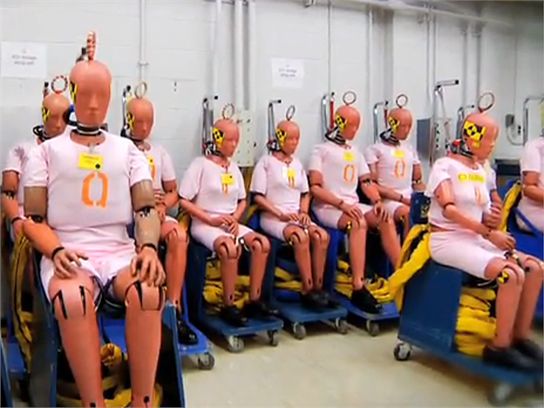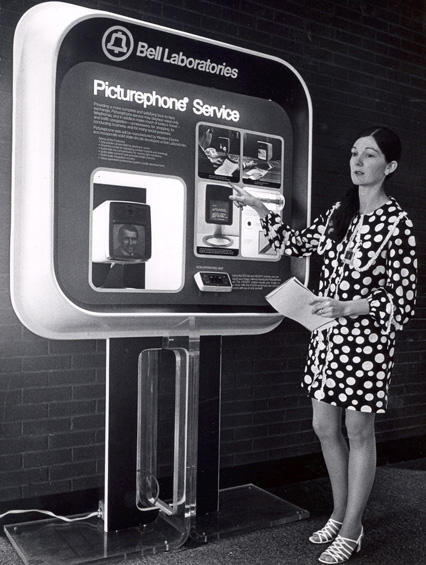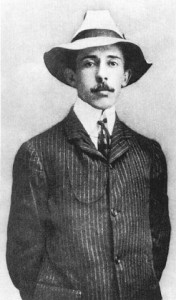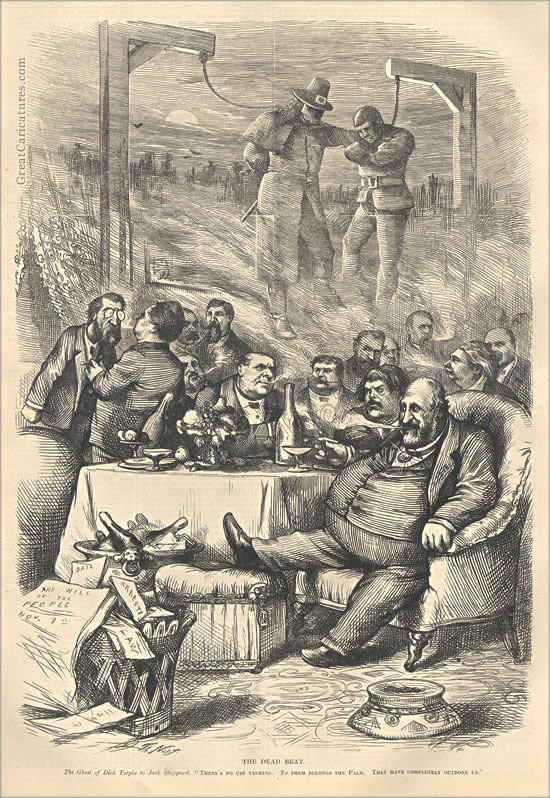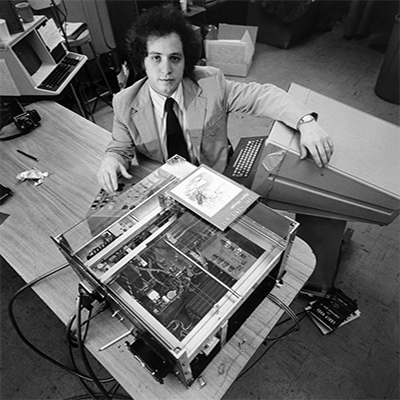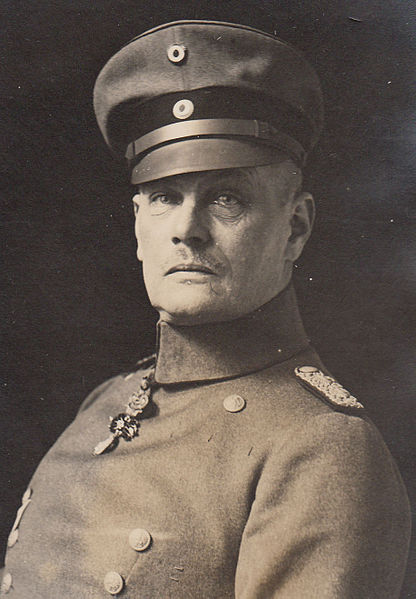The Ministry of Supply is doing a Kickstarter campaign for a futuristic, sweat-resistant dress shirt, called the Apollo, which is based on NASA Spacesuit technology. And not a moment too soon because it’s hot as hell out there. Some of you smell like a stable with a dead horse in it. And some of you reek like gun powder that was just used to shoot a hobo.
Tags: Fresno Slim
From “Google Glass and the Rise of Outsourcing Our Memories,” Tom Chatfield’s new BBC piece about the future of brain augmentation in the face of seemingly infinite information:
“As early as 1945, the American engineer and inventor Vannevar Bush described the potentials of a hypothetical system he dubbed ‘Memex’: a single device within which a compressed, searchable form of all the records and communications in someone’s life could be stored. It’s a project whose spirit lives on in Microsoft’s MylifeBits project, among other places, which attempted digitally to record every single aspect of a modern life – and presented the results in a book by researchers Gordon Bell and Jim Gemmell entitled Total Recall: How the E-Memory Revolution Will Change Everything.
What Google’s glasses suggest to me, though, is a giant leap forward in the sheer ease of capturing and broadcasting our lives from minute to minute – something that smartphones have already revolutionised once during the space of the last decade. Far more than mere technological possibility, it’s this portability and seamlessness that seem likely to most transform the way we live over the coming century. And it makes me wonder: what exactly does it mean when a computer’s memory becomes a more and more integral part of our own process of remembering?
The word ‘memory’ is the same in both cases, but there’s a huge gulf between the phenomena it describes in people and in machines. Computers’ memories offer a complete, faithful and objective record of whatever is put into them. They do not degrade over time or introduce errors. They can be shared and copied almost endlessly without loss, or precisely erased if preferred. They can be fully indexed and rapidly searched. They can be remotely accessed and beamed across the world in fractions of a second, and their contents remixed, augmented or updated endlessly.”
••••••••••
Animated version of Vannevar Bush’s Memex diagrams:
From “As We May Think,” by Vannevar Bush in the Atlantic,1945: “There is a growing mountain of research. But there is increased evidence that we are being bogged down today as specialization extends. The investigator is staggered by the findings and conclusions of thousands of other workers—conclusions which he cannot find time to grasp, much less to remember, as they appear. Yet specialization becomes increasingly necessary for progress, and the effort to bridge between disciplines is correspondingly superficial.
Professionally our methods of transmitting and reviewing the results of research are generations old and by now are totally inadequate for their purpose. If the aggregate time spent in writing scholarly works and in reading them could be evaluated, the ratio between these amounts of time might well be startling. Those who conscientiously attempt to keep abreast of current thought, even in restricted fields, by close and continuous reading might well shy away from an examination calculated to show how much of the previous month’s efforts could be produced on call. Mendel’s concept of the laws of genetics was lost to the world for a generation because his publication did not reach the few who were capable of grasping and extending it; and this sort of catastrophe is undoubtedly being repeated all about us, as truly significant attainments become lost in the mass of the inconsequential.
The difficulty seems to be, not so much that we publish unduly in view of the extent and variety of present day interests, but rather that publication has been extended far beyond our present ability to make real use of the record. The summation of human experience is being expanded at a prodigious rate, and the means we use for threading through the consequent maze to the momentarily important item is the same as was used in the days of square-rigged ships.
But there are signs of a change as new and powerful instrumentalities come into use.”
Tags: Gordon Bell, Jim Gemmel, Tom Chatfield, Vannevar Bush
As thrilled as I am to see the Higgs Boson particle–the so-called “God Particle”–was almost definitely discovered by the Large Hadron Collider, it brings to mind that America, with all its amazing academic science departments, should have been doing work on this scale. Not every federal project, even ones that fail, are bridges to nowhere, but in this political climate anything the government wants to invest in is treated as suspect. The free market is great, but you notice it didn’t lead to a collider here that is on par with the European one. How do we find thousands of lives and a trillion dollars to spend on a war that we don’t need to fight but not 1/100th of that for something that could put us at the vanguard of science?
As I recall, the LHC was mocked initially because of difficulties that slowed it down. Similarly, the Hubble Telescope in the U.S. was treated as a punchline when it encountered problems at the outset of its use. But both have turned out to contribute greatly to scientific knowledge.
And what if they hadn’t? What if they had been failures? Science and engineering are about searching and there is always an element of risk, sometimes a high one, in building something new with just a blueprint. But there’s a difference between folly and failure and we should be willing to risk the latter in the name of progress.•
••••••••••
“Without engineers, none of this would ever have happened. There would be no disasters–but also no achievement”:
A brief piece about the ghoulish mummy trade in Egypt that ran in the June 17, 1888 Brooklyn Daily Eagle and was originally published in the Portland Oregonian:
“A gentleman who has just returned from an extended foreign tour was asked yesterday why he had not brought home from Egypt, among other curios, a mummy. He said there was a great deal of fraud in the mummy business. Persons purchasing mummies, of course, like to get them as well preserved and natural looking as possible, and as those found are generally in a more or less dilapidated condition, vendors have engaged in the business of manufacturing bogus mummies. They bargain with tramps, beggars and such people for their defunct carcasses, paying them a sum sufficient to make their remaining days short and sweet. These fellows are preserved and pickled and then smoked till they are good imitations of the genuine mummy. Whole rows of these articles can be seen in smokehouses at once. When sufficiently dry, they are wrapped in mummy cloth and sold, to Americans chiefly, bringing in a high price.”
Today is a special day when Americans eat too much, drink too much and blow stuff up. That’s right, it’s Wednesday.
Oh, and it’s also July 4th, the birthday of the U.S.A., the greatest nation in the history of the world. If you forget that America is the best country ever, we’ll remind you again in ten minutes. That’s because we’re large yet insecure, much like Alec Baldwin. Luckily, other countries are far worse so they can’t say shit. Yup, Somalia, I’m looking at you. Suck it.
Anyhow, enjoy a safe and happy holiday!
••••••••••
Ray Charles singing “America the Beautiful” at Wrestlemania 2 in 1986:
If we’re wise, we play the odds, we take notice, we reduce risk. But some things are beyond our control, at birth and throughout our lives. Some of us get wicker furniture and some bubonic plague. From Kurt Vonnegut’s Cat’s Cradle:
“‘One time,’ said Castle, ‘when I was about fifteen, there was a mutiny near here on a Greek ship bound from Hong Kong to Havana with a load of wicker furniture. The mutineers got control of the ship, didn’t know how to run her, and smashed her up on the rocks near ‘Papa’ Monzano’s castle. Everybody drowned but the rats. The rats and the wicker furniture came ashore.’
That seemed to be the end of the story, but I couldn’t be sure. ‘So?’
‘So some people got free furniture, and some people got bubonic plague. At Father’s hospital, we had fourteen-hundred deaths inside of ten days. Have you ever seen anyone die of bubonic plague?’
‘That unhappiness has not been mine.’
‘The lymph glands in the groin and the armpits swell to the size of grapefruit.’
‘I can well believe it.’
‘After death, the body turns black–coals to Newcastle in the case of San Lorenzo. When the plague was having everything its own way, the House of Hope and Mercy in the Jungle looked like Auschwitz or Buchenwald. We had stacks of dead so deep and wide that a bulldozer actually stalled trying to shove them toward a common grave. Father worked without sleep for days, worked not only without sleep but without saving many lives, either.'”
Tags: Kurt Vonnegut
From “I Like to Build Alien Artifacts,” a Stephen Wolfram interview that ran in the European earlier this year, a segment about the possibilities of molecular-level computing:
“The European: I want to go back to the idea of the Turing machine. One of your arguments is that very simple programs can produce very complicated results – programs so simple that they could be encoded in a cell’s genome, for example.
Wolfram: Our intuition tends to be that we have to go through a lot of effort to build something that is complicated. But nature is very complex without going through a lot of effort: Evolution seems very complicated on a large time-scale, but the actual processes are not. They simply work and unfold and lead to new species. That was always a mystery to me, so a few years ago I began to experiment to see whether simple programs could produce very complex patterns of behavior. The question is: Is that how nature does it? I got a lot of evidence that in many cases, that is how nature works.
The European: This seems to contradict the general trend to drive technological innovation by packing more computational power into a single computer chip.
Wolfram: A couple of points. There is a phenomenon which I call computational irreducibility. When you have a process where the behavior is quite simple – like a planet orbiting around a star – we are smart enough to use math to figure out what will happen in the future without having to wait for the planet to move around. We can compute the outcome by plugging the right numbers into a formula. But many systems are irreducible after a number of steps – you really have to simulate each step to see what will happen. We need a lot of computational effort for that. But it’s a fallacy to believe that our current technology is the only possible computational technology. The fact is, we can make computers from a lot of materials, not just transistors. The reason that’s exciting is because it opens up the possibility of making a computer out of molecules. It hasn’t been done yet, and there’s a lot of ambient technology that is required to make a molecular computer possible. But it reminds us that we must not shrink transistors – we can use much simpler components.”
Tags: Stephen Wolfram
From the August 1, 1900 Brooklyn Daily Eagle, a note about my people, the Italians:
“Five Italians and a monkey were prisoners in the Myrtle Avenue court this morning before Magistrate Worth, charged with lounging. The officer who arrested the men said that he found them with their hand organs and the monkey sitting in the gutter at Lexington and Grand Avenues, drinking beer.”
Tags: Magistrate Worth
From “Hotel Offers Guests Electronic Bibles,” by Oliver Smith in the Telegraph:
“From today, all 148 rooms at the Hotel Indigo will contain a Kindle e-reader pre-loaded with a copy of the Bible. The hotel is claiming to be the first in Britain to offer such a service.
Guests are also permitted to download a copy of any other religious text – to the value of £5 or less – during their stay. Regular fiction books can also be purchased, with the costs added to guests’ bills.”
••••••••••
“That’s why the bible is the best seller in the world,” 1968:
Tags: Oliver Smith
The toughest thing for a company to do is to become successful. The second toughest thing is to survive success and continue innovating. From a new Vanity Fair piece about the decline of Microsoft:
“According to [Kurt] Eichenwald, Microsoft had a prototype e-reader ready to go in 1998, but when the technology group presented it to Bill Gates he promptly gave it a thumbs-down, saying it wasn’t right for Microsoft. ‘He didn’t like the user interface, because it didn’t look like Windows,’ a programmer involved in the project recalls.
‘The group working on the initiative was removed from a reporting line to Gates and folded into the major-product group dedicated to software for Office,’ Eichenwald reports. ‘Immediately, the technology unit was reclassified from one charged with dreaming up and producing new ideas to one required to report profits and losses right away.’
‘Our entire plan had to be moved forward three to four years from 2003–04, and we had to ship a product in 1999,’ says Steve Stone, a founder of the technology group. ‘We couldn’t be focused anymore on developing technology that was effective for consumers. Instead, all of a sudden we had to look at this and say, ‘How are we going to use this to make money?’’
A former official in Microsoft’s Office division tells Eichenwald that the death of the e-reader effort was not simply the consequence of a desire for immediate profits. The real problem for his colleagues was the touch screen: “Office is designed to inputting with a keyboard, not a stylus or a finger,’ the official says. ‘There were all kinds of personal prejudices at work.’ According to Microsoft executives, the company’s loyalty to Windows and Office repeatedly kept them from jumping on emerging technologies. ‘Windows was the god—everything had to work with Windows,’ Stone tells Eichenwald. ‘Ideas about mobile computing with a user experience that was cleaner than with a P.C. were deemed unimportant by a few powerful people in that division, and they managed to kill the effort.'”
Tags: Bill Gates, Kurt Eichenwald, Steve Stone
I have been nude 4 days now! (Upper East Side)
It’s been great going nude these past few days with the hot weather. I even went downstairs in my Apt building to the laundry room completely nude and didn’t get caught! Last night on a dare I walked up and down my street! Fun! Any other nudists out there in Manhattan?
The population of the Woodlands in Texas has swelled today to nearly 100,000, but it was a small Houston suburb when it was established in 1974, with the plan that its residents would be all watched over by computer, teletype, cable TV and other machines of loving grace.
An excellent paleofuture find by Smithsonian Magazine is this 1931 advertisement from an agricultural periodical that imagined a high-tech future for farming. The opening:
“The March 1931 issue of The Country Gentleman magazine included this advertisement for Timken bearings. With the bold headline ‘100 YEARS AHEAD’ the ad promises that the farmer of the future may be unrecognizable — thanks to Timken bearings, of course. Our farmer of tomorrow wears a suit to work and sits at a desk that looks oddly familiar to those of us here in the year 2012. We’ve looked at many different visions of early television, but this flat panel widescreen display really stands out as exceptionally visionary. Rather than toil in the field himself, the farmer of the future uses television (something more akin to CCTV than broadcast TV) and remote controls to direct his farm equipment.”

“The enormous crowd which had gathered inside and outside the grounds gave the aeronaut a tremendous ovation.”
Alberto Santos-Dumont, a Brazilian aviation pioneer whose chosen vocation was influenced by early reading of Jules Verne, answered a challenge in 1901 to travel around the Eiffel Tower in his airship within 30 minutes. From a report that year in the October 10th Brooklyn Daily Eagle:
“Paris–Santos-Dumont, who rounded the Eiffel Tower to-day in his airship, started for the first time at 2:29, but on leaving the park his guide rope caught in a tree and he was obliged to descend. He started against 2:42 P.M., rose 250 yards and then pointed for the Eiffel Tower, the balloon going in a straight line.
It was seen, through field glasses, to arrive at the tower and round it. The time, up to that point, with the wind in the balloon’s favor, was eight minutes and forty-five seconds. It returned against the wind and made slower headway, but still kept in true direction for St. Cloud, which it reached in the total time of twenty-nine minutes, fifteen seconds. But instead of descending immediately, Santos-Dumont made a broad sweep over the Aero Club grounds, with the result that another minute and twenty-five seconds were consumed before the workmen seized the guide rope. Thus, technically, Santos-Dumont exceeded the time limit by forty seconds.
The enormous crowd which had gathered inside and outside the grounds gave the aeronaut a tremendous ovation. As his basket came within speaking distance, Santos-Dumont leaned over the side and asked:
‘Have I won the prize?’
Hundreds of spectators shouted: ‘Yes! Yes!’ But the Count de Dion, a member of the committee approached and threw a damper on the enthusiasm by saying:
‘My friend, you have lost the prize by forty seconds.’
The crowd, however, refused to accept this view and a warm discussion ensued, the majority of the spectators taking the ground that Santos-Dumont was entitled to the prize.
The aeronaut, after protesting against the decision of the committee, finally shrugged his shoulders and remarked:
‘I do not care personally for the 100,000 francs. I intended to give it to the poor.’
A number of ladies who were present threw flowers over the aeronaut, others offered him bouquets, and one admirer, to the amusement of the onlookers, even presented him with a little white rabbit.”
From Michael Venables’ new Ars Technica piece about Stephen Hawking, a passage about the possibility of intelligent life beyond Earth:
“Stephen Hawking: We think that life develops spontaneously on Earth, so it must be possible for life to develop on suitable planets elsewhere in the universe. But we don’t know the probability that a planet develops life. If it is very low, we may be the only intelligent life in the galaxy. Another frightening possibility is intelligent life is not only common, but that it destroys itself when it reaches a stage of advanced technology.
Evidence that intelligent life is very short-lived is that we don’t seem to have been visited by extra terrestrials. I’m discounting claims that UFOs contain aliens. Why would they appear only to cranks and weirdos? Do I believe that there is some government conspiracy to conceal the evidence and keep for themselves the advanced technology the aliens have? If that were the case, they aren’t making much use of it. Further evidence that there isn’t any intelligent life within a few hundred light years comes from the fact that SETI, the Search for Extra Terrestrial Life, hasn’t picked up their television quiz shows. It is true that we advertise our presence by our broadcast. But given that we haven’t been visited for four billion years, it isn’t likely that aliens will come any time soon.”
Tags: Michael Venables, Stephen Hawking
When I originally posted this 1978 video about the famous Byte Shop chain, I didn’t have time to elaborate on why I thought we’d sort of failed the promise of the Home Brew Club and personal computer kits, so I’ll add an addendum.
The people in this video were imagining their future, building it. Media in America had long been a top-down operation and for a brief, shining moment, it wasn’t. I suppose it’s sort of inevitable that this period was transient and that some of the best and brightest (or, perhaps, most ambitious) would take the lead and use this early experience to build brands and drive markets. But despite the free flow of information we have now (a tremendous good), the actual direction is still essentially a top-down situation all over again, though, granted, the people at the top have a very good sense of design. I’m not suggesting everyone could have created brilliant things, but there was something definitely lost in the shift back to passive media consumption that occured by the 1980s.
I don’t mean to disparage the amazing tools we’ve been handed, but I think that’s part of the problem: They’ve been handed to us. Maybe our use of these tools would be more productive and less narcissistic if more of it had been the product of our own hands.•
From Robert Reich’s new appraisal of America’s first Gilded Age in the late 19th century, which was defeated, and the current one, which has not yet been:
“We’ve entered a new Gilded Age, of which Mitt Romney is the perfect reflection. The original Gilded Age was a time of buoyant rich men with flashy white teeth, raging wealth and a measured disdain for anyone lacking those attributes, which was just about everyone else. Romney looks and acts the part perfectly, offhandedly challenging a GOP primary opponent to a $10,000 bet and referring to his wife’s several Cadillacs. Four years ago he paid $12 million for his fourth home, a 3,000-square-foot villa in La Jolla, California, with vaulted ceilings, five bathrooms, a pool, a Jacuzzi and unobstructed views of the Pacific. Romney has filed plans to tear it down and replace it with a home four times bigger.
We’ve had wealthy presidents before, but they have been traitors to their class—Teddy Roosevelt storming against the ‘malefactors of great wealth’ and busting up the trusts, Franklin Roosevelt railing against the ‘economic royalists’ and raising their taxes, John F. Kennedy appealing to the conscience of the nation to conquer poverty. Romney is the opposite: he wants to do everything he can to make the superwealthy even wealthier and the poor even poorer, and he justifies it all with a thinly veiled social Darwinism.
Not incidentally, social Darwinism was also the reigning philosophy of the original Gilded Age, propounded in America more than a century ago by William Graham Sumner, a professor of political and social science at Yale, who twisted Charles Darwin’s insights into a theory to justify the brazen inequality of that era: survival of the fittest. Romney uses the same logic when he accuses President Obama of creating an ‘entitlement society’ simply because millions of desperate Americans have been forced to accept food stamps and unemployment insurance, or when he opines that government should not help distressed homeowners but instead let the market ‘hit the bottom,’ or enthuses over a House Republican budget that would cut $3.3 trillion from low-income programs over the next decade. It’s survival of the fittest all over again. Sumner, too, warned against handouts to people he termed ‘negligent, shiftless, inefficient, silly, and imprudent.’
When Romney simultaneously proposes to cut the taxes of households earning over $1 million by an average of $295,874 a year (according to an analysis of his proposals by the nonpartisan Tax Policy Center) because the rich are, allegedly, ‘job creators,’ he mimics Sumner’s view that ‘millionaires are a product of natural selection, acting on the whole body of men to pick out those who can meet the requirement of certain work to be done.’ In truth, the whole of Republican trickle-down economics is nothing but repotted social Darwinism.” (Thanks Browser.)
Tags: Robert Reich
I’m not yet sure how much I agree with Michael Bourne’s new Millions essay, “The High Line: New York’s Monument to Gentrification,” but it’s so well-written and provocative. An excerpt about the decommissioned rail structure which was re-purposed for maximum shabby-chicness:
“To a certain degree, the success or failure of any public space depends on its ability to project the dreamscape of its users. New York’s Central Park, built in the latter part of the 19th century when Lower Manhattan was teeming with immigrant ghettos and soot-belching factories offered New Yorkers a pastoral fantasy of rolling hills and grassy meadows. The World Trade Center Memorial, with its sunken pools occupying the footprint of the twin towers, transforms a scene of carnage into a site for peaceful contemplation. What is fascinating about the High Line, what makes its design concept at once breathtaking and a little wince-inducing, is the particular dreamscape it evokes. Unlike earlier reclaimed urban industrial areas like Fisherman’s Wharf in San Francisco or New York’s own South Street Seaport, which airbrushed away the dirt and grime to transform the abandoned districts into theme-park versions of themselves, the High Line embraces its blight. Everywhere you look you see lovingly restored cracked plaster and million-dollar gardens made to look like neglected weed beds.
The High Line is the distressed skinny jeans of public parks, the gourmet taco truck of urban tourist attractions, and as such, it represents the high-water mark of the hipster aesthetic, which venerates poverty and decay as signifiers of authenticity. Thirty feet in the air, winding through the remains of one of the last blue-collar work sites Manhattan, the High Line is a monument to gentrification, a showcase of what can happen when hip young college graduates invade an impoverished area and repopulate it with art galleries and fancy restaurants. But here’s the truly amazing part: it all works. The underlying aesthetic of the park’s design may be a tad fatuous, girded as it is by unexamined assumptions about working-class authenticity, but the park itself is a gorgeously executed gem.” (Thanks Browser.)
Tags: Michael Bourne
I was watching this 1977 footage of period inventions that were making it easier for blind and deaf people to navigate society when what comes on my screen but a demonstration of the Kurzweil Reading Machine-you know, the gadget that gave computers a voice. The whole video is interesting but Ray Kurzweil’s creation appears at the 3:40 mark.
From The Age of Spiritual Machines, Kurzweil recalls the creation of his reading machine:
In 1974, computer programs that could recognize printed letters, called optical character recognition (OCR), were capable of handling only one or two specialized type styles. I founded Kurzweil Computer Products, Inc. that year to develop the first OCR program that could recognize any style of print, which we succeeded in doing later that year. So the question then became, ‘What is it good for?’ Like a lot of clever computer software, it was a solution in search of a problem.
I happened to sit next to a blind gentleman on a plane flight, and he explained to me that the only real handicap that he experienced was his inability to read ordinary printed material. It was clear that his visual disability imparted no real handicap in either communicating or traveling. So I had found the problem we were searching for – we could apply our ‘omni-font’ (any font) OCR technology to overcome this principal handicap of blindness. We didn’t have the ubiquitous scanners or text-to-speech synthesizers that we do today, so we had to create these technologies as well. By the end of 1975, we put together these three new technologies we had invented – omni-font OCR, CCD (Charge Coupled Device) flat-bed scanners, and text-to-speech synthesis to create the first print-to-speech reading machine for the blind. The Kurzweil Reading Machine (KRM) was able to read ordinary books, magazines, and other printed documents out loud so that a blind person could read anything he wanted.•
Very happy to find an online version of the 1970 Look magazine interview with Walter Cronkite that Oriana Fallaci conducted, though it was scanned haphazardly so if you want to read it you have to rotate it several times or print it out. But it’s worth it, as the Q&A was the meeting of two very different journalists while they both were in their prime. An excerpt:
“Walter Cronkite:
Anyhow, let’s begin our conversation. What’s the subject?
Oriana Fallaci:
The one we are already talking about: Walter Cronkite, of course—who he is, what he thinks. Yes, overall, what he thinks. I share this curiosity with God knows how many million people. Each time I listen to you, I wonder: What are his opinions? He doesn’t express them, and he must have them!
Walter Cronkite:
You bet I do. Very strong opinions. Yet I would never give them with the news because this would hurt my objectivity. From time to time, CBS has suggested that I do commentaries or analyses, but I have always refused. Should I take a position with analysis or commentary, then the public would decide that I am prejudiced in editing the news. The public does not understand journalism. They do not know how we work, they do not believe that we can hold strong private thoughts and still be objective journalists. So I choose to do only unbiased reporting. I give you the news, and I don’t help you make the judgment. You make it all alone. Don’t you agree?
Oriana Fallaci:
Not completely. I say rather: Look, I do not possess the whole truth, so I can only give you the truth that I saw and heard and touched and even felt. Which is very uncomfortable because it is the perfect way to make everybody unhappy. Like when the reactionaries call me a Communist, or the Communists call me reactionary. . . .
Walter Cronkite:
But this means that you are objective! The point is that the public doesn’t understand objectivity, they judge us on the facts that we give them. Besides, your journalism is different from mine, you explain facts more than give news, and you are not as cautious as I am. You can afford the luxury of being emotional.
Oriana Fallaci:
Yes. No solid German stock, all furious Florentine stock. Yet I admire your detachment so passionately. Only a couple of times, if I am not wrong, you have shown emotion on TV. When John Kennedy died and when the first man landed on the moon.
Walter Cronkite:
Uhm . . . ‘Go, baby, go!’ I yelled so. The moon excited me a lot. But there are other examples. At the Democratic Convention in Chicago. for instance, I got very angry. We had such a bunch there on the Convention floor. And certainly when I found out that Kennedy was dead, that I had to say it, I choked up quite a bit. God, it was hard! You know, Oriana, I never go on the air in shirt-sleeves or with my hair uncombed. That day, Charles Collingwood relieved me, and when I got up after four hours and a half, I saw my jacket hanging over the back of my chair. So I realized that I was in shirt-sleeves and that I had not even combed my hair. But something else happened. When I went to my office to call my wife, both my lines were busy because the switchboard was jammed with calls. Then my phone rang, I grabbed it and the voice of a woman came on: “May I have the News Department of CBS?’ So I said, ‘This is the News Department of CBS.’ And she said, ‘Well, I want to say that it is absolutely criminal for CBS to have that man Cronkite on the air at a time like this, when everybody knows that he hates the Kennedys. But there he is, in shirt-sleeves, crying his crocodile tears.’ I said: ‘Madam, what’s your name?’ She gave me her name . . . let’s say it was Mrs. Smith. And I said: ‘Mrs. Smith, you are speaking to Walter Cronkite and you are a goddamn idiot.'”
_________________________
Walter Cronkite’s first evening news broadcast on CBS, 1963:
Tags: Oriana Fallaci, Walter Cronkite
NEED CLEAN URINE – $15 (BROOKLYN downtown)
Need someone to supply me with clean urine for work once per week, small plastic bottle, the stores charge 25.00 for 2 to 3 uses from 1 bottle, im willing to pay 15.00 weekly not bad for piss especially if you live in downtown brooklyn it cant have any drugs or alchole in it ,,, i do take benzos leggally so if you do to that is fine ,serious replys only if we have to meet by train i will pay your train ride or if i come to you please be in a safe area and near a sbway line manhatten brooklyn not coming to bronx or staten island maybe queeens , has to be male urine with no other narcotic drugs so if your on say percs no good no 420, clean urine with the exception of benzos and methadose i take that for my back ruptured discs with scripts ,, please get back to me if serious and wanna make a weekly easy 15.00 bucks if not i will just go to the village and get the one they sell but rather it be real , thank you and again downtown bklyn is a big plus.
From the May 2, 1897 Brooklyn Daily Eagle:
“The greatest dandy in the world is said to be Prince Albert of Thurn, Germany. This fastidious young man attires himself in a new suit of clothes every day, enough yearly to keep twenty experienced workmen going and to run up a bill of $15,000. Each suit of wearing apparel is highly perfumed with the odor of roses at $25 an ounce. He wears no less than $1,000 neckties during a year, being on average of three every day. A laundry employing twelve people is kept specially for washing his soiled linen, which he never wears more than twice, and his cast-off boots number 200 pair s a year.”




